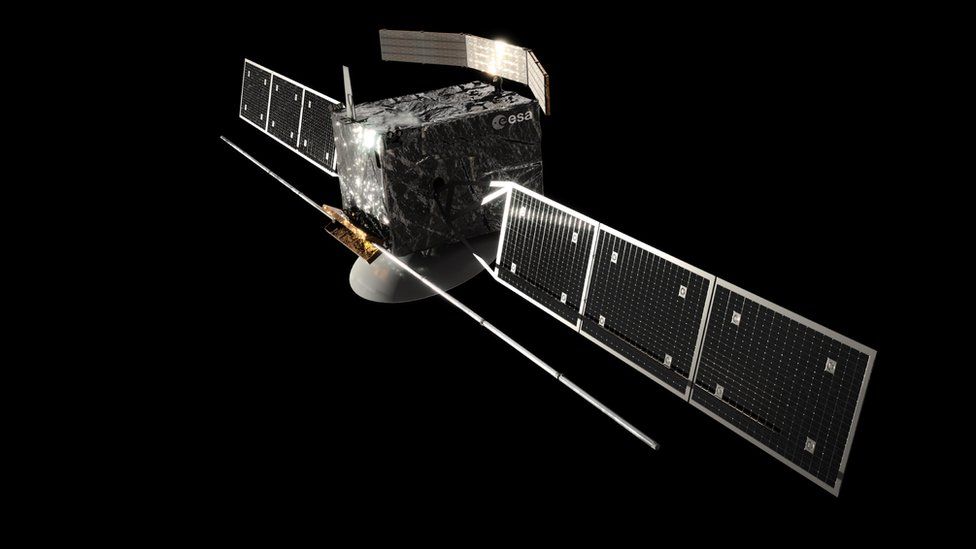
Scientists have found evidence parts of Venus's surface move around like pieces of continent on Earth.
And while this activity is probably not driven by plate tectonics, as on Earth, it could be a "cousin" of that process.
The findings fit an emerging picture of a planet very much alive, in contrast to the traditional view of Venus.
Europe is launching a spacecraft, EnVision, to radar-map and gather spectroscopic measurements of the planet's surface and atmosphere.
And Nasa is sending two craft, Veritas and DaVinci+, to Venus, towards the end of this decade.
"We've identified a previously unrecognised pattern of tectonic deformation on Venus, one that is driven by interior motion just like on Earth," said lead author Paul Byrne, associate professor of planetary science at North Carolina State University.
"Although different from the tectonics we currently see on Earth, it is still evidence of interior motion being expressed at the planet's surface."
Dr Byrne, Dr Richard Ghail, from Royal Holloway, University of London, Prof Sean Solomon, from Columbia University, in New York, and colleagues detected signs blocks of rocky crust in Venus's lowlands region had rotated and moved laterally relative to one another.
They compare the apparently relatively recent activity to the way fragments of pack ice jostle around in the sea in Earth's polar regions.

The blocks - 100-1,000km (620 miles) long - also resemble the Earth's crust in:
- China's Tarim and Sichuan basins
- Australia's Amadeus basin
- the Bohemian massif underlying much of the Czech Republic
Richard Ghail, principal investigator on the European Space Agency's EnVision mission, told BBC News: "This research shows that we have a lot to learn from Venus and that there is a much wider spectrum of surface mobility than just plate tectonics."
The researchers used data gathered by Nasa's Magellan spacecraft, launched in 1989 and active until 1994, to map the surface structures, which they have named "campi", from the Latin for "field", "campus".
Traditionally, Venus's lithosphere - its rocky outer layer - was thought to be in one continuous piece, in contrast to the Earth's, which is broken up into a mosaic of mobile tectonic plates.

The Moon, Mars and Mercury are also thought to have static lithospheres.
But the findings, published in the journal PNAS, suggest Venus's lithosphere actually has some degree of mobility - though nowhere near as much as Earth's.
The results of computer models show molten rock - magma - roiling beneath the crust could produce the strain, fracturing and distortion seen in Magellan images of the surface.
So Venus's tectonic activity might resemble that on early Earth, during the Archean Eon, between four billion and 2.5 billion years ago, when the heat flow within the planet was higher and the lithosphere thinner.
Follow Paul on Twitter.
"activity" - Google News
June 22, 2021 at 10:04PM
https://ift.tt/3vNao13
Signs of geological activity found on Venus - BBC News
"activity" - Google News
https://ift.tt/3ddCXMh
https://ift.tt/2WkO13c
Bagikan Berita Ini














0 Response to "Signs of geological activity found on Venus - BBC News"
Post a Comment